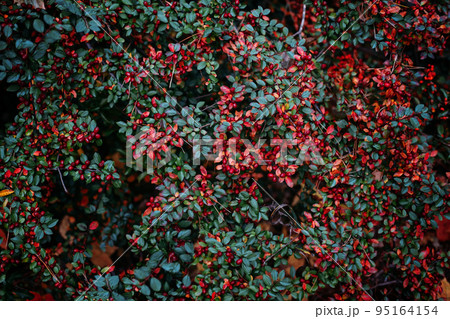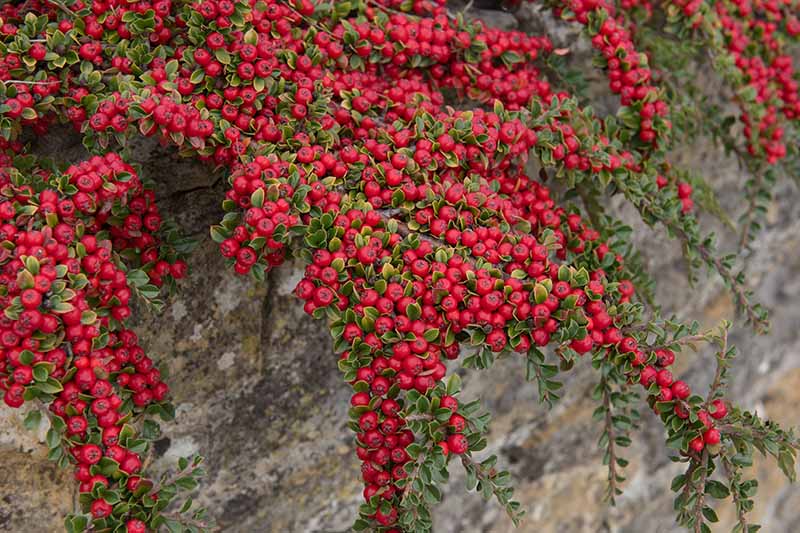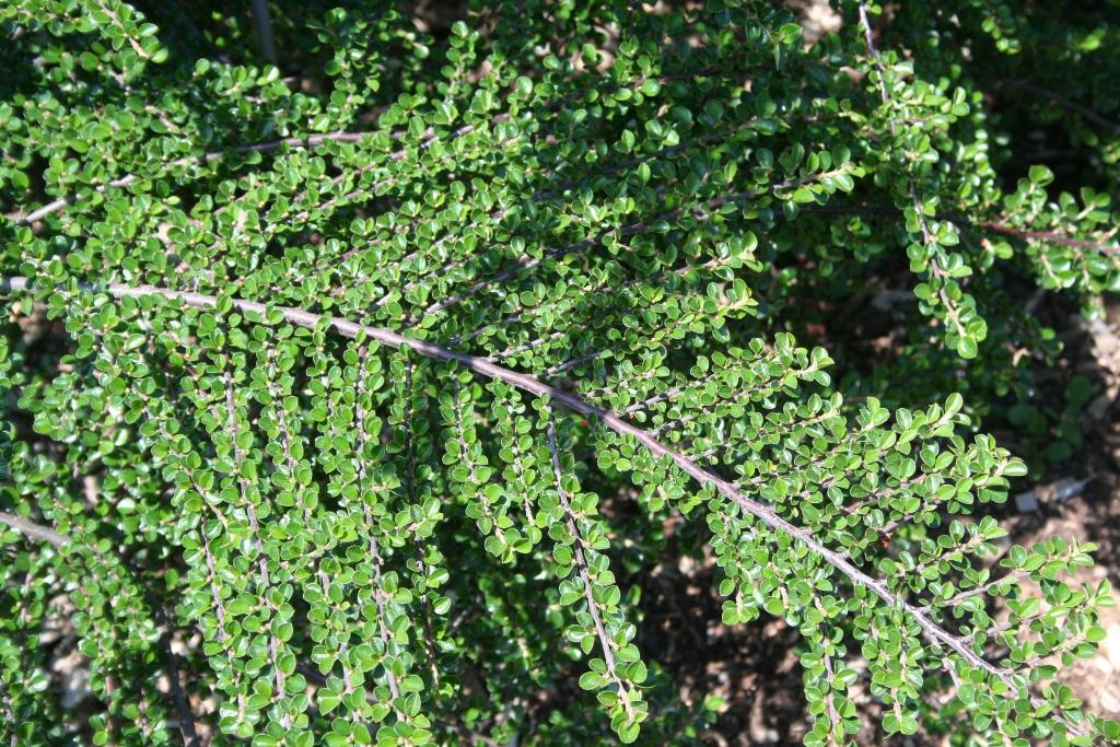Rockspray Cotoneaster: The Easytogrow Shrub That Will Add Color And Interest To Your Garden
Title: Rockspray Cotoneaster: The Easy-to-Grow Shrub That Will Add Color and Interest to Your Garden
Introduction:
Rockspray cotoneaster is a versatile shrub that can add color and interest to any garden. It is relatively easy to grow and care for, making it a good choice for even novice gardeners. Rockspray cotoneaster is also deer-resistant, so you can enjoy its beauty without worrying about the animals eating it.
In this blog post, we will discuss the different varieties of rockspray cotoneaster, how to plant and care for it, and how to use it in your garden design. We will also provide some tips on how to prevent pests and diseases.
Main Content:
- Varieties of rockspray cotoneaster
There are many different varieties of rockspray cotoneaster, each with its own unique characteristics. Some popular varieties include:
* Cotoneaster horizontalis is the most common variety of rockspray cotoneaster. It has small, dark green leaves that turn orange and red in the fall. This variety grows 2-3 feet tall and 6-8 feet wide.
* Cotoneaster 'Coral Beauty' has bright orange-red leaves that turn crimson in the fall. This variety grows 2-3 feet tall and 4-6 feet wide.
* Cotoneaster 'Elegantissima' has white flowers in the spring and small, red fruits in the fall. This variety grows 2-3 feet tall and 4-6 feet wide.
* Cotoneaster 'Red Cascade' has dark red leaves that turn scarlet in the fall. This variety grows 2-3 feet tall and 5-7 feet wide.
- How to plant and care for rockspray cotoneaster
Rockspray cotoneaster is a relatively easy plant to grow. It prefers full sun to partial shade and well-drained soil. It is drought-tolerant once established, but it will benefit from regular watering during the first year after planting.
To plant rockspray cotoneaster, dig a hole that is twice as wide and as deep as the root ball. Add a layer of compost or other organic matter to the bottom of the hole. Place the plant in the hole and backfill with soil, tamping down gently. Water well.
Rockspray cotoneaster does not need to be pruned heavily. You can simply remove any dead, diseased, or damaged branches in the spring. You may also want to trim the plant back in the summer to keep it in shape.
- How to use rockspray cotoneaster in your garden design
Rockspray cotoneaster can be used in a variety of ways in your garden design. It can be used as a groundcover, a border plant, or an accent plant. It can also be trained to grow on a wall or trellis.
If you are using rockspray cotoneaster as a groundcover, plant it 2-3 feet apart. If you are using it as a border plant, plant it 3-4 feet apart. If you are using it as an accent plant, plant it 5-6 feet apart.
Rockspray cotoneaster can be used to add color and interest to any part of your garden. It is a versatile plant that is easy to grow and care for.
Conclusion:
Rockspray cotoneaster is a beautiful and versatile shrub that can add color and interest to any garden. It is relatively easy to grow and care for, making it a good choice for even novice gardeners. Rockspray cotoneaster is also deer-resistant, so you can enjoy its beauty without worrying about the animals eating it.
If you are looking for a low-maintenance shrub that will add beauty to your garden, rockspray cotoneaster is a great option. With its colorful foliage and attractive berries, rockspray cotoneaster is sure to become a favorite in your garden.
Rockspray cotoneaster is a beautiful and versatile shrub that can be used in a variety of landscaping applications. It is known for its cascading growth habit, attractive foliage, and showy berries. Rockspray cotoneaster is relatively low-maintenance and can be grown in a variety of soil conditions.
If you are interested in learning more about rockspray cotoneaster, please visit Home Gardening. This website provides comprehensive information on the plant, including its care requirements, planting instructions, and pest and disease control.
FAQ of rockspray cotoneaster
- What is rockspray cotoneaster?
Rockspray cotoneaster is a deciduous shrub that is native to Europe and Asia. It has a spreading habit and can grow up to 3 feet tall and 6 feet wide. The leaves are glossy green and turn red in the fall. The flowers are white and bloom in the spring. The fruits are red and are edible for birds, but not for humans.
- What are the best conditions for growing rockspray cotoneaster?
Rockspray cotoneaster prefers full sun to partial shade and well-drained soil. It is drought tolerant once established, but it does need regular watering when it is young. It is also relatively pest and disease resistant.
- How do I propagate rockspray cotoneaster?
Rockspray cotoneaster can be propagated by stem cuttings or from seed. Stem cuttings are the preferred method, as they are more successful and produce plants that are more vigorous. To take stem cuttings, cut a healthy side shoot from the plant in the summer. The cutting should be about 4 inches long and have at least two sets of leaves. Remove the lower leaves and plant the cutting in a pot of well-draining potting mix. Water the cutting well and place it in a bright location out of direct sunlight. The cutting should root in about 4-6 weeks.
- How do I care for rockspray cotoneaster?
Rockspray cotoneaster is a relatively low-maintenance plant. Once it is established, it only needs occasional watering and fertilizer. It should be pruned in the spring to remove any dead or damaged branches. Rockspray cotoneaster can be susceptible to powdery mildew, so it is important to water the plant at the base and avoid getting the leaves wet.
- How can I use rockspray cotoneaster in my landscape?
Rockspray cotoneaster is a versatile plant that can be used in a variety of ways in the landscape. It can be used as a groundcover, border plant, or hedge. It can also be used to create a cascading effect on slopes or walls. Rockspray cotoneaster is a beautiful and hardy plant that can add interest to any landscape.
Image of rockspray cotoneaster
10 different images of rockspray cotoneaster that are free to use:
- A close-up of the leaves and flowers of a rockspray cotoneaster plant. The leaves are small and oval-shaped, with a serrated edge. The flowers are small and white, with five petals.
- A full-size view of a rockspray cotoneaster plant. The plant is low-growing and spreading, with a dense foliage. The branches are covered in small, dark green leaves.
-Leaf-Close-Up.jpg)
- A rockspray cotoneaster plant in bloom. The plant is covered in clusters of small, white flowers. The flowers are very fragrant.

- A rockspray cotoneaster plant with ripe berries. The berries are small and red, and they are clustered together on the branches. The berries are edible and are a popular food source for birds.

- A rockspray cotoneaster plant in winter. The leaves have fallen off the plant, and the branches are covered in small, red berries. The berries provide a splash of color in the winter landscape.

- A rockspray cotoneaster plant growing on a rocky slope. The plant is well-suited to growing in dry, rocky conditions. It is a popular choice for landscaping in areas with poor soil.

- A rockspray cotoneaster plant as a groundcover. The plant can be used as a groundcover to provide a low-maintenance, drought-tolerant option. It is also a good choice for erosion control.

- A rockspray cotoneaster plant as a hedge. The plant can be used to create a low hedge or border. It is also a good choice for topiary.
-Leaf-Close-Up.jpg)
- A rockspray cotoneaster plant in a container. The plant can be grown in a container, making it a good choice for patios and balconies. It is important to provide the plant with well-draining soil and full sun.

- A rockspray cotoneaster plant in a woodland setting. The plant can be grown in a woodland setting, where it will provide a splash of color in the shade. It is important to choose a location that is sheltered from strong winds.

Post a Comment for "Rockspray Cotoneaster: The Easytogrow Shrub That Will Add Color And Interest To Your Garden"